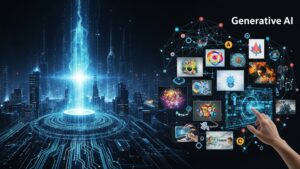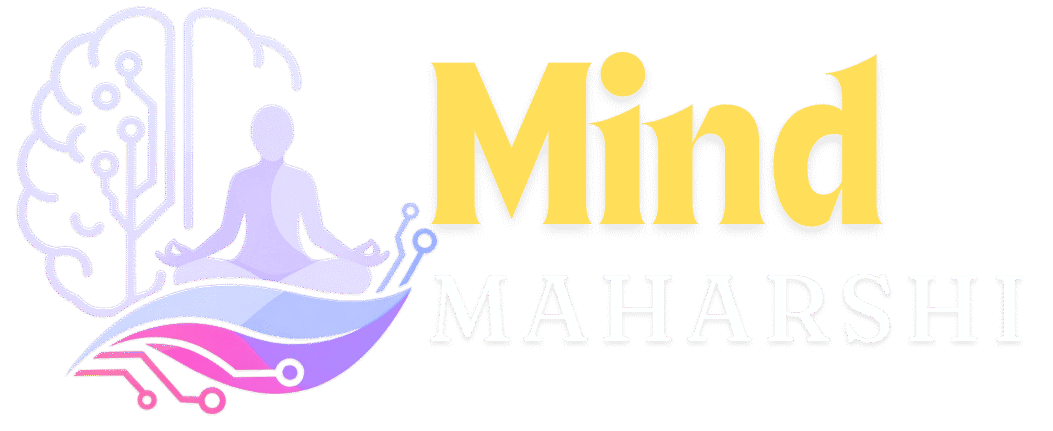Generative AI has captivated the world, transforming how we create and interact with technology. Imagine AI composing a symphony or designing a new architectural marvel – these are no longer futuristic fantasies but present-day realities. This exciting field of artificial intelligence is rapidly expanding its influence across nearly every industry, making it crucial to understand its capabilities and implications.
What is Generative AI?
At its core, Generative AI refers to AI systems capable of producing novel and realistic content, such as text, images, audio, and even code. Unlike traditional AI, which primarily focuses on analysis, classification, or prediction based on existing data, generative AI creates something entirely new.
Think of it this way: a traditional AI might identify a cat in an image, while a generative AI could generate a brand new image of a cat that has never existed before. This fundamental difference is powered by advanced technologies like Natural Language Processing (NLP), computer vision, and especially deep learning.
How Does Generative AI Work?
Generative AI models, such as GPT (Generative Pre-trained Transformer) and DALL·E, learn patterns and structures from vast datasets. These models are built upon complex neural networks, which are designed to mimic the human brain’s ability to learn and recognize patterns.
The process typically involves:
- Training: The AI model is fed enormous amounts of data (e.g., millions of images or text passages) to learn the underlying relationships and characteristics of that data.
- Fine-tuning: After initial training, the model can be further refined on a smaller, more specific dataset to improve its performance for a particular task.
- Prompt-based generation: Users provide a “prompt” – a text description, an image, or another input – and the AI uses its learned knowledge to generate content that aligns with that prompt.
Many of these models leverage Large Language Models (LLMs) and transformers, a type of neural network architecture that has proven incredibly effective in processing sequential data like language.

Popular Applications of Generative AI
The versatility of generative AI has led to a wide array of fascinating and practical applications:
Content Creation
From marketing materials to creative writing, generative AI is revolutionizing content production. It can assist with drafting blog posts, generating engaging copywriting for advertisements, and even crafting social media updates, significantly speeding up the content pipeline.
Art & Design
Generative AI tools are empowering artists and designers to explore new creative frontiers. They can produce unique AI-generated art, design distinctive logos, and even help visualize product designs with unprecedented efficiency.
Media & Entertainment
The entertainment industry is seeing significant disruption with generative AI. This includes the creation of realistic deepfakes (though with ethical considerations), automated video generation, and even the composition of original music.
Chatbots & Assistants
The backbone of many modern conversational interfaces, generative AI powers advanced chatbots for customer support and intelligent virtual tutors that can provide personalized learning experiences.
Code Generation
Developers are increasingly leveraging generative AI for assistance. Tools like GitHub Copilot can suggest lines of code or entire functions, and platforms like ChatGPT can help with debugging and explaining complex coding concepts.
Healthcare & Research
In scientific fields, generative AI is accelerating discovery. It plays a crucial role in drug discovery by predicting molecular structures and facilitating protein folding research, which is vital for understanding diseases.
Benefits of Generative AI
The advantages of embracing generative AI are numerous and impactful:
- Increased productivity: By automating content creation and other tasks, generative AI significantly boosts efficiency.
- Enhanced creativity and personalization: It provides new avenues for creative expression and allows for the rapid generation of highly personalized content tailored to individual preferences.
- Automation of repetitive tasks: Tedious and time-consuming tasks, such as drafting initial content or generating variations, can be handled by AI, freeing up human resources for more strategic work.
- Accessibility for non-technical users: Many generative AI tools are designed with user-friendly interfaces, making advanced AI capabilities accessible even to those without specialized technical knowledge.
Challenges and Risks
Despite its promise, generative AI also presents significant challenges and risks that require careful consideration:
- Misinformation and deepfakes: The ability to generate highly realistic but fabricated content, such as deepfake videos, poses a serious threat for spreading misinformation and eroding trust.
- Bias in AI-generated content: If the data used to train AI models contains biases, the generated content will likely reflect and even amplify those biases, leading to unfair or discriminatory outcomes.
- Copyright and ownership concerns: The legal landscape around who owns content generated by AI, especially when trained on copyrighted material, is still evolving and presents complex challenges.
- Ethical and regulatory issues: The rapid advancement of generative AI raises broad ethical questions about its responsible use, accountability, and the need for appropriate regulations to govern its development and deployment.
Future of Generative AI
The future of generative AI is poised for even more groundbreaking developments. We can anticipate the rise of multimodal AI, capable of seamlessly generating content across different modalities (e.g., text, image, and audio simultaneously). The emergence of autonomous agents that can perform complex tasks with minimal human intervention is also on the horizon.
Experts predict that generative AI will profoundly reshape future jobs and industries, creating new roles while augmenting existing ones. Its continuous evolution will undoubtedly drive innovation and efficiency across diverse sectors.
Best Generative AI Tools in 2025
The market for generative AI tools is rapidly expanding. Here are some of the leading platforms available in 2025:
- ChatGPT: Developed by OpenAI, it’s a powerful language model excelling in text generation, conversation, and coding assistance.
- Midjourney: Known for its stunning artistic image generation from text prompts, it’s a favorite among digital artists.
- DALL·E: Another OpenAI creation, DALL·E specializes in generating diverse and creative images from textual descriptions.
- Jasper AI: A popular AI writing assistant, Jasper is designed to help businesses generate high-quality marketing copy, blog posts, and more.
- Runway ML: An end-to-end creative suite that offers a range of AI tools for video editing, image generation, and more.
How to Get Started with Generative AI
Embarking on your generative AI journey is more accessible than ever:
- Learning platforms: Explore courses on platforms like Coursera and YouTube that offer tutorials and structured learning paths on generative AI.
- Tools for beginners: Start with user-friendly tools like ChatGPT or basic image generators to get a feel for the technology.
- Prompt engineering tips: Learning how to craft effective prompts is key to getting the best results from generative AI tools. Experiment with different phrasing and details.
- Safety and ethical use guidelines: Always be mindful of the ethical implications and potential risks associated with generative AI, and strive to use these tools responsibly.
Conclusion
Generative AI stands as a testament to the incredible power and potential of artificial intelligence. Its ability to create novel content is transforming industries, boosting productivity, and unlocking new realms of creativity. While challenges and risks exist, a responsible and informed approach will allow us to harness its vast capabilities for positive impact.
